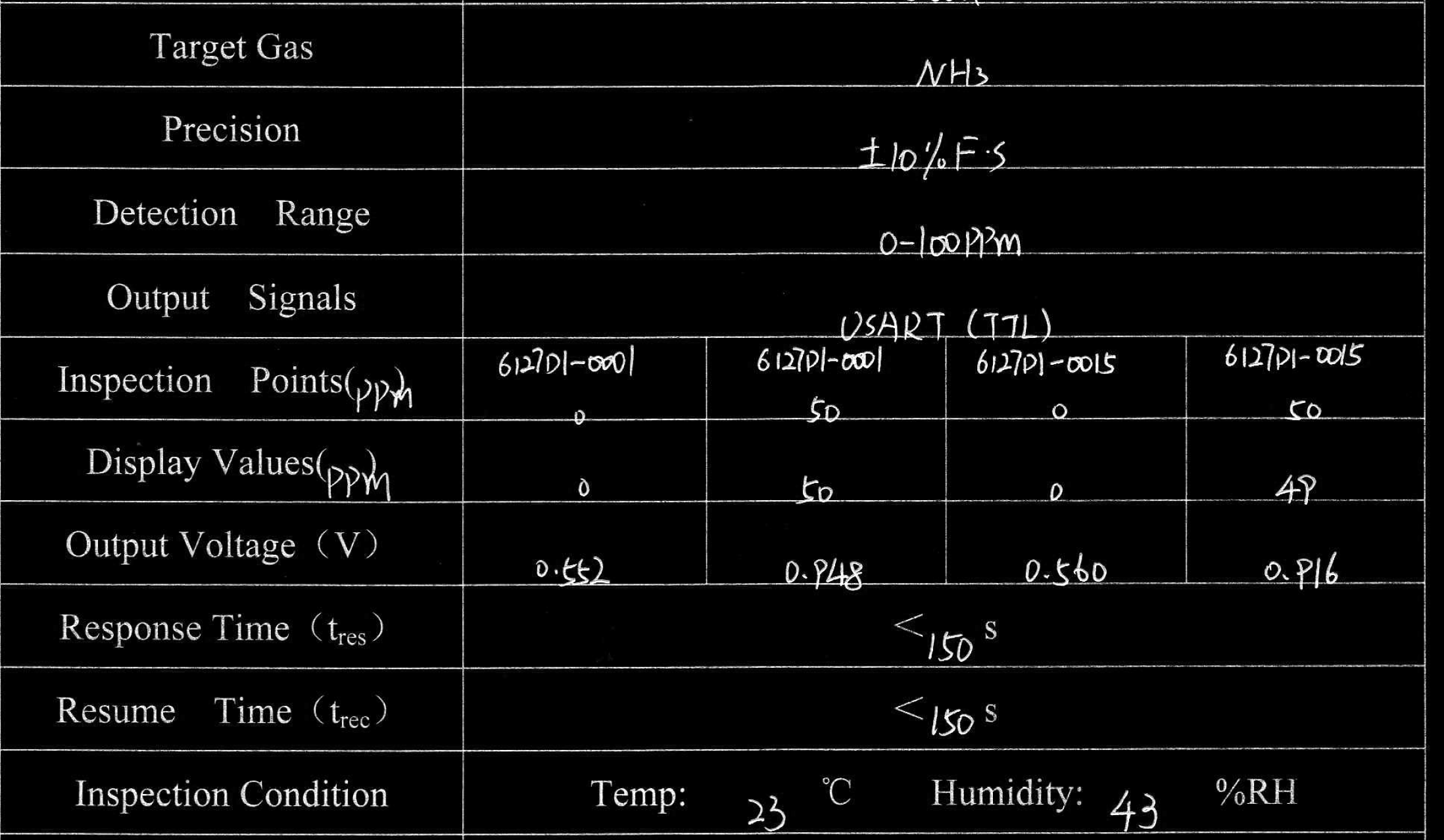Calibrated sensors
The electrochemical sensors used in this project, are individually calibrated in a test lab. They have a unique identifier, and so, for each - calibration data is generated after tests in the controlled environment.

Besides the 4 sensors that I selected for this project, there are other sensors for a wide range of gases. This is one of the reasons I designed the PCB with sockets, for interchangeable sensors. The other reason is that electrochemical sensors have a lifespan of about 2 years. That is because they work in a similar way to electrochemical batteries - they generate a current when the target gas is present. So with a limited lifespan, the maintenance of these units needs to be made as simple as possible - for a practical reasons considering city level deployments.
List of gases with compatible sensors
Getting back to the list of gases for which there are compatible Series-4 sensors:
Carbon Monoxide CO (0-1000ppm), Oxigen O2 (0-25%vol), Ammonia NH3 (0-100ppm), Hydrogen Sulphide H2S (0-100ppm), Nitrogen Dioxide NO2 (0-20ppm), Hydrogen Fluoride HF (0-10ppm), Sulphur Dioxide SO2 (0-20ppm), Chlorine CL2 (0-10ppm), Ozone O3 (0-20ppm), Ethylene C2H4 (0-100ppm), Formaldehyde CH2O (0-10ppm), Ethylene Oxide ETO (0-20ppm), Hydrogen H2 (0-1000ppm), Hydrogen Chloride HCL (0-20ppm).
Now that the chemistry lesson is over, I'll take you to another favourite hobby of mine, software.
Calibration parameters
The datasheet indicates two ways of accessing the data. There is the Digital format that comes with registry data that compensates the readings on the fly, and the raw analogue output where the compensation parameters need to be added to the data.
First option is the easy way, but for flexibility I went for the second. Raw data is being obtained from the 4 sensors and sent to the server. There, a database holds the unique sensor identifiers and the calibration parameters for each.

The calculations are easy:

Finally when you call the RESTFul API to see the actually readings from the unit, you get the final data, with the calibration parameters added to the result. Perfectly calibrated sensor readings.
The advantage to this is that maintenance work is reduced to a minimum: in case you need to replace old sensors, you just insert them in the sockets, then change the numbers on the server, in a simple dashboard.
The same approach should you want to configure a detector unit to work with different sensors, any from the list will work, you can even use 4 sensors for the same gas, for maximum redundancy.
 Radu Motisan
Radu Motisan
Discussions
Become a Hackaday.io Member
Create an account to leave a comment. Already have an account? Log In.
Hi. Where did you get this calibration certificate? Thanks!
Are you sure? yes | no